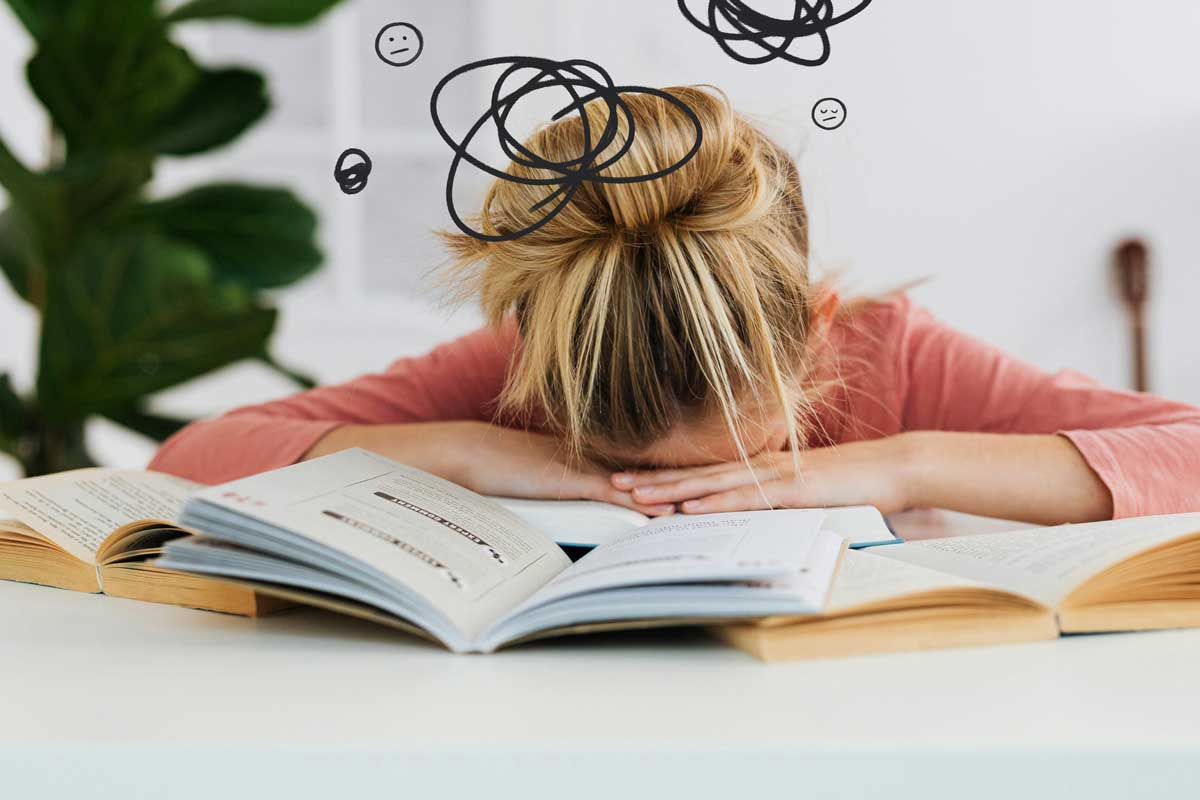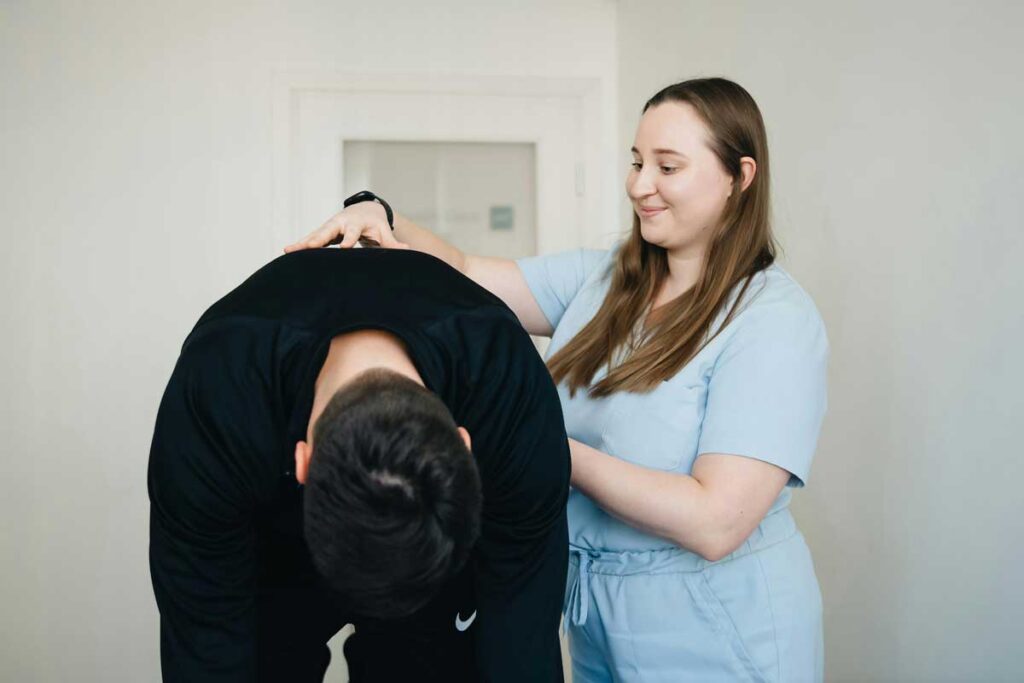Feeling like the world is spinning around you when you’re standing still? You’re not alone.
Vertigo is a common yet often misunderstood symptom that affects many people of all ages, but especially older adults. As physiotherapists, we see vertigo impact quality of life in ways that go far beyond occasional dizziness, it can interfere with walking, working, and even sleeping.
In this article, we’ll explore what vertigo is, its common causes, how we assess it, and most importantly, how physiotherapy can help.
What is Vertigo?
Vertigo is a false sensation of movement, often described as a spinning or swaying feeling, even when you’re stationary. It’s different from general dizziness, which might feel more like lightheadedness or feeling faint.
Vertigo itself isn’t a disease but a symptom of an underlying condition, usually involving the vestibular system, the sensory system responsible for balance, spatial orientation, and coordination.
Common Symptoms of Vertigo
- Spinning or tilting sensation (even when still)
- Imbalance or unsteadiness
- Nausea or vomiting
- Sweating
- Nystagmus (involuntary eye movements)
- Headaches or visual disturbances
- Difficulty concentrating or fatigue after movement

What Causes Vertigo
Vertigo can be broadly classified into two categories: Peripheral (originating in the inner ear) and Central (related to the brain or nervous system).
Peripheral Causes
Benign Paroxysmal Positional Vertigo (BPPV)
- The most common cause of vertigo.
- Occurs when calcium crystals (otoconia) in the inner ear become dislodged and enter the semicircular canals.
- Triggered by head movements such as turning in bed, looking up/down, or bending over.
Vestibular Neuritis (and Labyrinthitis)
Vestibular neuritis is inflammation of the vestibular nerve, often after a viral infection such as a cold or flu. It causes:
- Sudden onset of intense vertigo lasting hours to days
- Nausea, vomiting, imbalance, and difficulty walking
- No hearing loss (in neuritis), but hearing may be affected in labyrinthitis
Recovery may take days to weeks. Some people develop long-term imbalance or visual dependence if not properly rehabilitated. Early physiotherapy can significantly reduce the duration and severity of symptoms.
Vestibular neuritis may follow infections like herpes simplex virus and can be mistaken for more serious conditions like stroke, so a proper assessment is crucial.
Ménière’s Disease
Ménière’s disease is a chronic and episodic inner ear disorder thought to be caused by abnormal buildup of endolymphatic fluid in the labyrinth.
Key symptoms include:
- Recurrent episodes of vertigo lasting 20 minutes to several hours
- Hearing loss, often fluctuating
- Tinnitus(ringing in the ears)
- Fullness or pressure in the ear
As the condition progresses, hearing loss may become permanent. The cause of the fluid imbalance is not fully understood, but genetic, autoimmune, and viral factors may play a role.
While physiotherapy can’t cure Ménière’s, vestibular physiotherapy in Adelaide is useful between attacks to reduce residual imbalance, and education around dietary sodium reduction, hydration, and stress management can help reduce episode frequency.
Vestibular Migraine
Vestibular migraine is an underdiagnosed but increasingly recognised cause of vertigo. It presents as dizziness or vertigo episodes associated with migraine symptoms, even without head pain.
Typical symptoms:
- Episodes of vertigo lasting minutes to hours
- Visual sensitivity or visual aura
- Motion sensitivity or imbalance
- May co-occur with headaches, nausea, light/noise sensitivity
It is more common in women and often has a family history of migraines. Vestibular migraines can mimic BPPV, Ménière’s, or even anxiety disorders, so a careful history is essential.
Vestibular physiotherapy in Adelaide plays a key role by helping distinguish triggers (e.g., stress, sleep deprivation, hormonal changes), providing balance training, and improving motion tolerance. Medical management often includes migraine-preventive medications and lifestyle modifications.
Central Causes
- Stroke or TIA (transient ischemic attack)
- Multiple sclerosis (MS)
- Brainstem or cerebellar lesionsConcussion or post-traumatic vertigo
How do Physiotherapists assess Vertigo?
The Health on Grange team has extensive experience with vertigo and vestibular physiotherapy for Adelaide patients, and before treatment, we conduct a thorough assessment to identify the source and type of vertigo.
Subjective History
- Onset, frequency, and duration of symptoms
- Triggers (e.g., rolling in bed, head movements, stress)
- Associated symptoms: hearing loss, headaches, nausea
- Past medical history (infections, migraines, trauma)
Positional Tests
- Dix-Hallpike Test
- Roll Test
- Eye movement observation (nystagmus)
Balance and Gait Testing
- Timed Up and Go (TUG)
- Dynamic Gait Index (DGI)
- Romberg or Sharpened Romberg test
Vestibulo-Ocular Reflex (VOR) Assessment
Tests how well your eyes stay focused when your head moves.

How can Vestibular Physiotherapy help?
1. Canalith Repositioning Maneuvers
- Epley Maneuver (for posterior canal BPPV)
- Barbecue Roll / Lempert Maneuver (for horizontal canal BPPV)
2. Vestibular Rehabilitation Therapy (VRT)
- Habituation Exercises
- Gaze Stabilisation
- Balance and Postural Training
- Walking and Functional Training
3. Education and Lifestyle Advice
- Sleep with your head elevated
- Avoid sudden head movements
- Stay hydrated, reduce stress, get enough rest
- Identify and manage migraine triggers
When to refer or seek Medical Attention
- Sudden and severe vertigo with neurological symptoms
- Hearing loss or tinnitus
- No improvement after physiotherapy
- Suspected central causes (stroke, tumor, etc.)
Vertigo can be unsettling and debilitating, but it’s also highly treatable. The Health on Grange Physiotherapists are well-trained to assess and manage most causes of peripheral vertigo. With proper diagnosis and tailored rehabilitation with vestibular physiotherapy in Adelaide, most people can regain balance and confidence.
If you or someone you know is experiencing vertigo, book a vestibular physiotherapy consultation today.
